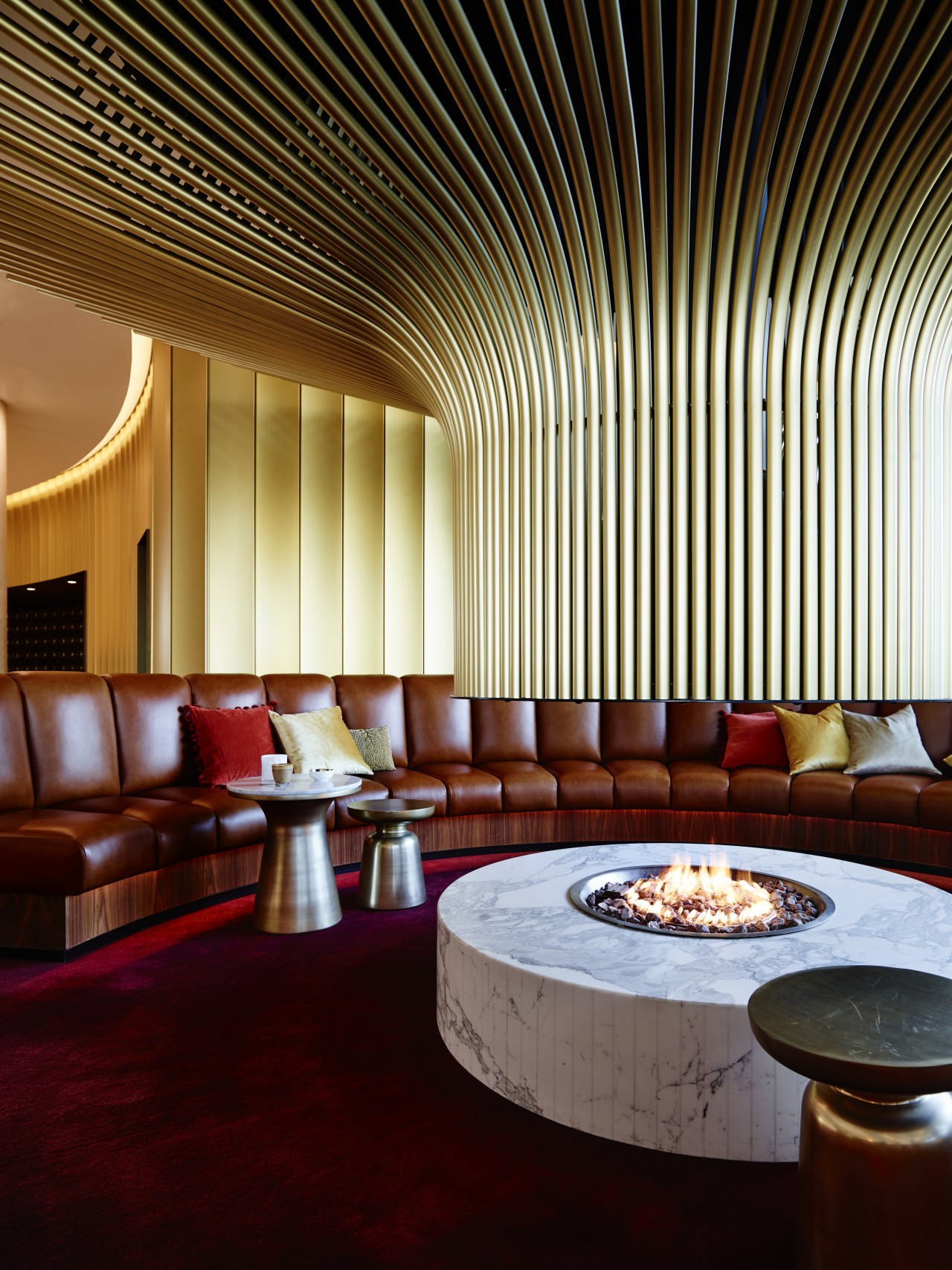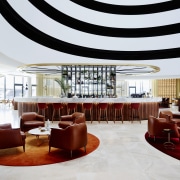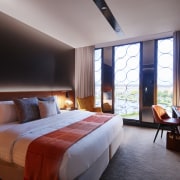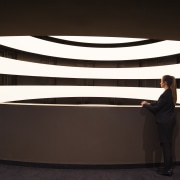Canberra Airport Hotel design uses a circle motif, glass facade and gold internal pods
Contemporary airport hotel has a curved exterior and an open-plan lobby with a dramatic circular atrium

When Chicagoan architect Walter Burley Griffin laid out Canberra on a radiating axial geometry to rival modern-day Paris, he made much of the circle as a design form. And when Bates Smart designed the Canberra Airport Hotel, with director Philip Vivian leading the design team, the firm tapped into his use of that pleasing geometric form.
"Our aim was to create a decidedly Canberra hotel that responds both to Griffin's original vision and the hotel's unique position as the gateway to the Canberra Airport," says Vivian.
"After studying Griffin's plan we worked with his geometry of circles and axes to create an appropriate design to act as a landmark for the airport terminal."
The resulting design for the building has a bold circular form that clearly marks the terminal entry regardless of your direction of approach.
While the dominant circle tapers away from the airport at one end, the gently curving glass facade, makes for an eye-catching sight. And this is echoed by the round complementary rooftop structure that encloses the decks of the hotel's penthouse suites.
The hotel's curvilinear facade was achieved by alternating wide and narrow glass modules, each with slightly different glazing. This composition creates the illusion of a smooth curve while actually made from a multitude of straight sections of glass.

At the same time, this arrangement resulted in residential-scaled framed' windows on the interior.
The circle is also repeated in a metal sunshade screen which helps unite the facade into a singular expression limiting the effects variously pulled or drawn drapes have on the building's overall look.
As the hotel's views aren't particularly scenic, the architects instead designed it with an arresting, welcoming internal space. At ground level, gold' pods are a feature of the interior spaces.
"The open-plan ground floor contains the social areas of the hotel, and can be used as a public space for functions," says Vivian.
"The stand-alone pods are designed to reference the main geometry theme of the building and enclose specific functions such as reception, administration, the kitchen, and various meeting rooms."
Bar and lounge areas take centre stage in the atrium while the restaurant and fireplace are located on the perimeter for views. Lowered ceilings and rod screens in these areas provide intimacy, while maintaining connection with the main space.
However, the main focus of the interior is the circular atrium space that climbs right up through the building uniting the guest rooms on the different levels of the hotel.
Achieving an effect a little like the interior of the Guggenheim Museum in New York City, white circular balustrades are contrasted with darkened circulation spaces. The latter read as black negative spaces from the lobby floor and the effect, a little like a giant curling ribbon, is dramatic.

The light and shadows also provide a degree of privacy for guests when accessing their rooms.
"At the peak of this sculptural internal void, a constellation of random circular skylights casts beams of light down through the interior," says the architect. "The skylight elements also ensure the giant volume has a visual sense of enclosure."
The radial geometry of the rooms maximises connection to the views, both internal and external. Darkened walls in the individual rooms heighten the drama of the outlook while full height glass windows are framed to maintain a human scale.
To optimise external views, natural light penetration and space, the hotel's guest suites are open plan, with the shower and toilet to the rear in glass enclosures.
Drapes, blackout blinds and sheers work together with the circular metal screens to optimise control over the sun and privacy.
The mesh adds privacy, too, as well as building on the hotel's circular theme, which is seen everywhere from the curving facade and rooftop element to the rugs on the lobby floors.
Credit list
Architecture and interior design
Services engineer
Landscaping
Acoustic engineer
Roof
Veneers
Reception furniture
Front entry curved sliding doors
Construction
Civil and hydraulic engineer
Fire consultant
Cladding
Flooring
Lighting
Stonework
Story by: Charles Moxham
Home kitchen bathroom commercial design
Rising to the occasion
Supporting the arts
A strong home in a strong land













